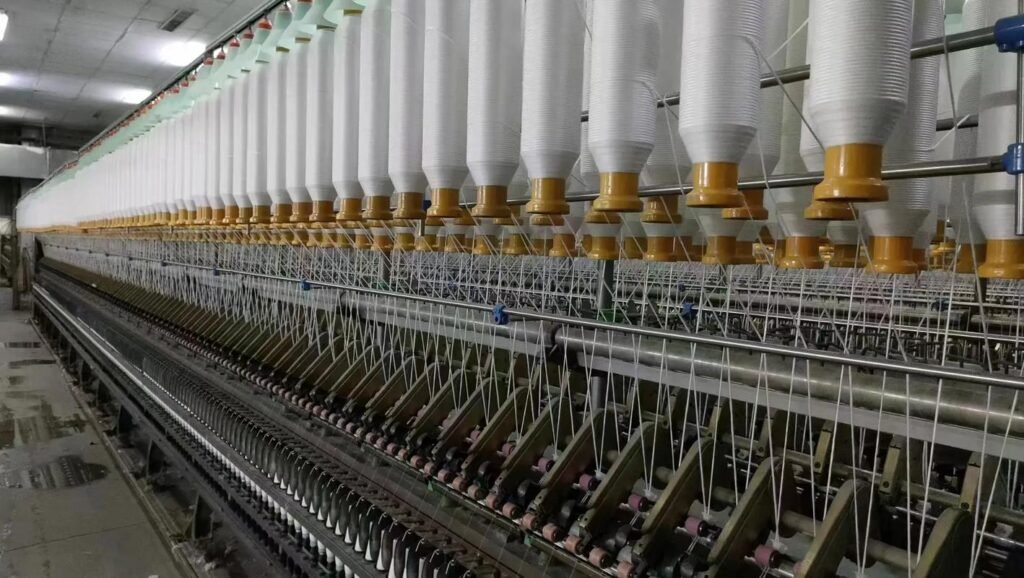
Flax and linen are terms often used interchangeably—yet they represent two distinct stages of a textile’s journey from plant to product. Flax is the bast fiber harvested from the stem of the Linum usitatissimum plant, while linen is the woven fabric made from spun flax fibers.
Flax fibers undergo retting, scutching, and spinning to transform raw plant stalks into yarns, whereas linen refers specifically to the textile woven from those yarns, exhibiting properties like moisture-wicking, strength, and a characteristic slubbed texture. Emperor Napoleon once prized Irish linen for his army’s uniforms, unaware that the same flax fibers in their fields would not become “linen” until they’d passed through centuries-old European mills—proof that understanding the distinction can elevate your fabric sourcing from good to exceptional.
What Is Flax and How Is It Cultivated for Textile Use?
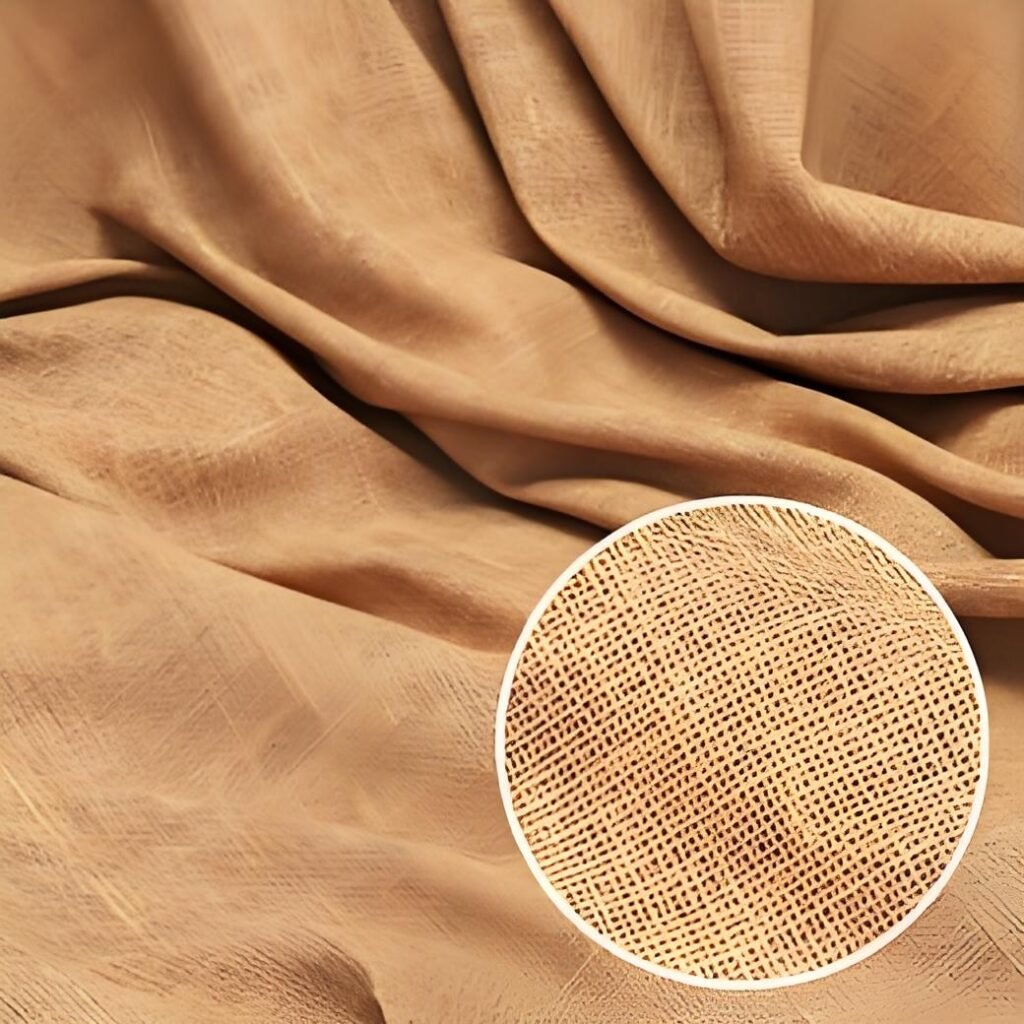
Flax is the raw botanical fiber extracted from the stalk of the Linum usitatissimum plant, prized for its strength and fineness. Cultivation begins with selecting long-staple flax varietals (28–36 mm staple length), planting in well-drained, calcareous soils, and harvesting by pulling rather than cutting to preserve fiber continuity. This process yields fibers with high tensile strength (25–32 cN/tex) and low lignin content (<4 %), foundational attributes for premium linen yarns.
Agronomic & Harvesting Practices
Cultivar Selection
- Long-Staple Varieties: ‘Belinka’ and ‘Macbeth’ bred for fiber lengths >32 mm.
- Yield vs. Quality: Premium cultivars yield 2.5 t/ha of fiber, compared to 3.5 t/ha for commodity flax.
Soil & Climate Requirements
- Soil pH: Optimal 6.5–7.5 in chalky or loamy soils for robust root development.
- Climate: Cool, moist summers (15–20 °C average) encourage uniform flowering and fiber development.
Planting & Growth Cycle
- Sowing Density: 80–100 kg seed/ha, row spacing 12–15 cm to optimize fiber length and reduce lodging.
- Growth Duration: 100–120 days from sowing to full bloom.
Harvesting Techniques
- Pulling vs. Cutting: Pulling lifts the entire stalk with roots, preserving maximum fiber length; cutting can shorten staples by 10–15 %.
- Retting Readiness: Harvest at full flowering for peak cellulose content; delayed retting risks over-maturity and fiber brittleness.
Flax Cultivation Metrics
| Parameter | Premium Flax | Commodity Flax | Impact on Fiber |
|---|---|---|---|
| Staple Length (mm) | 32–36 | 24–28 | Longer staples = stronger yarns |
| pH Range | 6.5–7.5 | 6.0–7.0 | Optimizes retting efficiency |
| Sowing Density (kg/ha) | 80–100 | 60–80 | Impacts node spacing & fiber length |
| Harvest Method | Pulled | Cut | Pulling preserves length |
What Exactly Is Linen and How Is It Defined as a Fabric?
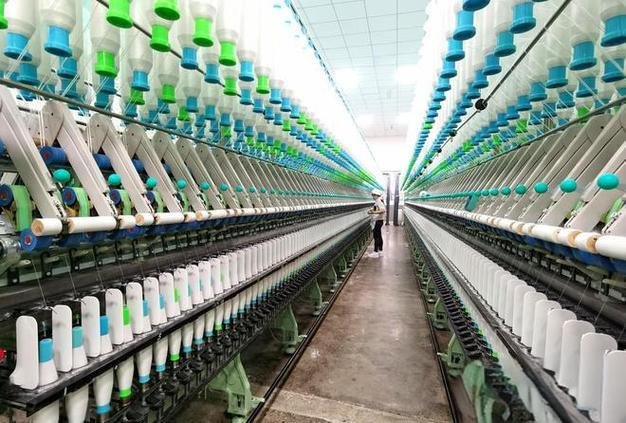
Linen is the textile woven from spun flax fibers, characterized by its crisp hand, distinctive natural slubs, and exceptional durability. Defined by ISO 2076 and textile trade standards, linen fabric must contain at least 85 % flax fiber by weight to carry the “linen” designation—though most high-end shirting and home–textile linens use 100 % flax. Its plain or twill weaves deliver breathability (air permeability ≥200 L/m²·s), moisture-wicking (regain 12–15 %), and tensile strength (3,000–4,000 N/m), making it ideal for apparel, bedding, and décor.
Fabric Definitions and Key Attributes
Composition Standards
- ISO 2076: Defines fiber identification and classification; linen requires ≥85 % flax.
- Trade Labels: “Pure Linen” for 100 % flax; “Linen Blend” for ≥50 % flax mixed with other fibers.
Weave Constructions
- Plain Weave: Balanced durability and crisp drape; common in shirts and bedding.
- Twill Weave: Diagonal rib enhances drape and abrasion resistance; used in pants and upholstery.
- Basket Weave: Chunky texture for rustic appeal; popular in throws and decorative fabrics.
Performance Benchmarks
- Air Permeability: ≥200 L/m²·s (ASTM D737) ensures comfort in warm climates.
- Moisture Regain: 12–15 % (ASTM D2654)—higher than cotton, promoting quick drying.
- Tensile Strength: 3,000–4,000 N/m (ASTM D5034) for long-lasting wear.
Aesthetic Characteristics
- Natural Slub Texture: Irregularities from fiber bundles give linen its signature character.
- Matte Luster: Subtle sheen distinct from cotton’s flat finish.
- Softening Over Time: Hand improves by \~10 %–15 % each wash cycle.
Defining Linen Fabric Properties
| Attribute | Standard Requirement | High-End Linen |
|---|---|---|
| Flax Content (%) | ≥85 % | 100 % |
| Air Permeability | ≥200 L/m²·s | 250–350 L/m²·s |
| Moisture Regain (%) | 12–15 | 13–15 |
| Tensile Strength (N/m) | 3,000–3,500 | 3,500–4,000 |
| Weave Types | Plain, Twill, Basket | Specialty jacquard and dobby also used |
How Are Flax Fibers Processed into Linen Yarns and Fabrics?
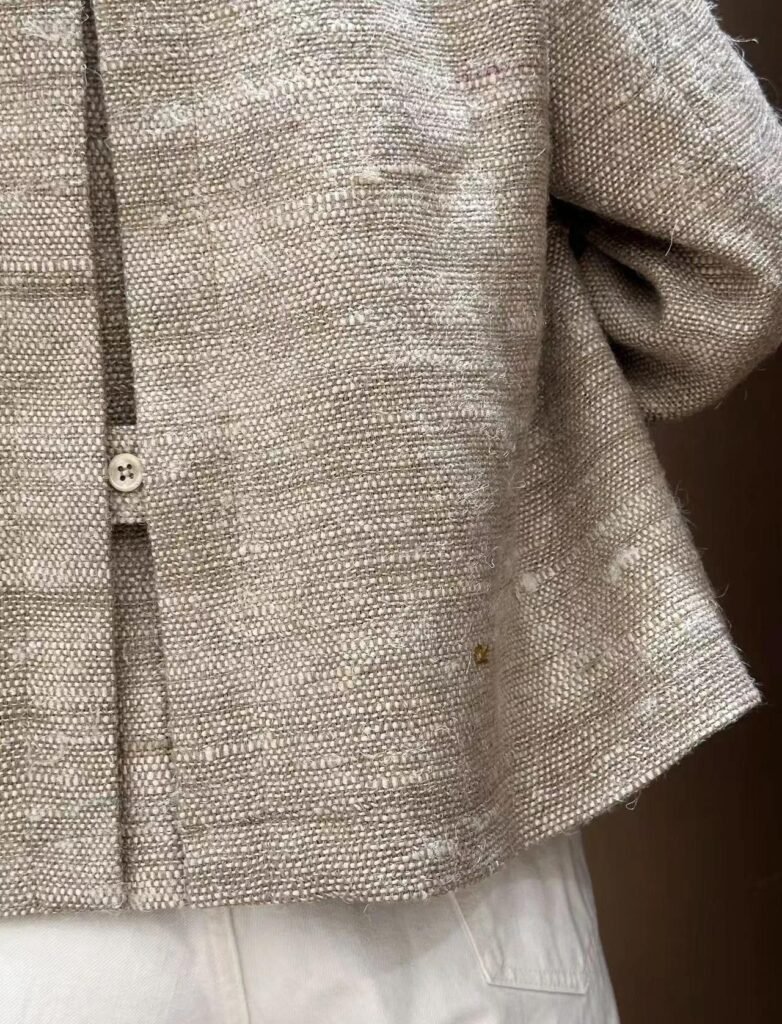
Transforming raw flax stalks into linen fabric is a multi-stage process combining traditional craft with modern precision. It begins with retting to free the bast fibers, continues through scutching and hackling to refine and align fibers, proceeds to spinning into yarns with controlled twist and count, and culminates in weaving and finishing—each step critical to achieving linen’s characteristic strength, texture, and drape.
The Flax-to-Linen Processing Pipeline
Retting
- Purpose: Decompose pectin binding fibers to the stalk.
- Methods: Water Retting: Flax bundles immersed in slow-moving tanks 10–14 days; yields the cleanest, strongest fibers. Dew Retting: Field-layed stalks exposed to moisture and microbes over 4–6 weeks; eco-friendlier but yields slightly coarser fibers.
Scutching & Hackling
- Scutching: Mechanical beaters remove woody shives and break stalks, producing “line fiber.”
- Hackling: Pass fibers through progressively finer combs to separate and align, producing long “top” fiber and shorter “tow” fiber.
- Outcome: Top fiber (30–36 mm staples) destined for fine yarns; tow fiber used for coarser counts or technical blends.
Spinning
- Yarn Counts: Ne 30–40 for lightweight linens and fine shirting. Ne 20–30 for medium/heavy fabrics (table linens, upholstery).
- Twist Level: 20–25 turns per inch balances tensile strength and hand softness.
- Process: Ring-spinning preferred for premium lines; open-end for cost-effective bulk grades.
Weaving
- Loom Types: Shuttle looms for heritage linens; rapier and air-jet looms for high-speed production.
- Weave Choices: Plain for crispness; twill for drape; dobby or jacquard for motifs.
- Density: High-end shirts use 16 epi × 14 ppi; heavier textiles use 10 epi × 8 ppi.
Finishing
- Scouring: Removes oils and residual pectins.
- Bleaching or Dyeing: Reactive dyes favored for colorfastness; natural unbleached linens prized for eco-appeal.
- Mechanical Finishes: Calendering for smoothness; enzyme polishing for softness; optional DWR or stain-resist.
Flax-to-Linen Processing Steps
| Stage | Method Variants | Key Metrics | Quality Impact |
|---|---|---|---|
| Retting | Water (10–14d) / Dew (4–6wk) | Fiber strength: 30–32 / 28–30 cN/tex | Water = highest purity & strength |
| Scutching | Mechanical beaters | Shive content <1% | Smoothness & reduced loom wear |
| Hackling | Multi-stage combing | Tow vs. top separation efficiency | Yarn uniformity & slub control |
| Spinning | Ring / Open-end | Yarn count Ne 20–40; twist 20–25 TPI | Hand feel vs. production cost |
| Weaving | Plain, Twill, Dobby | EPI/PPI: 10–16 / 8–14 | Fabric weight, drape, appearance |
| Finishing | Scour, bleach, dye, enzyme | Softness +30%, colorfastness ≥4 | Final hand, look, functionality |
By comprehensively understanding each transformation—from field to fabric—buyers can specify precise quality parameters, anticipate processing impacts on hand and performance, and engage European mills in informed, productive partnerships.
Which Physical Properties Distinguish Raw Flax from Finished Linen?
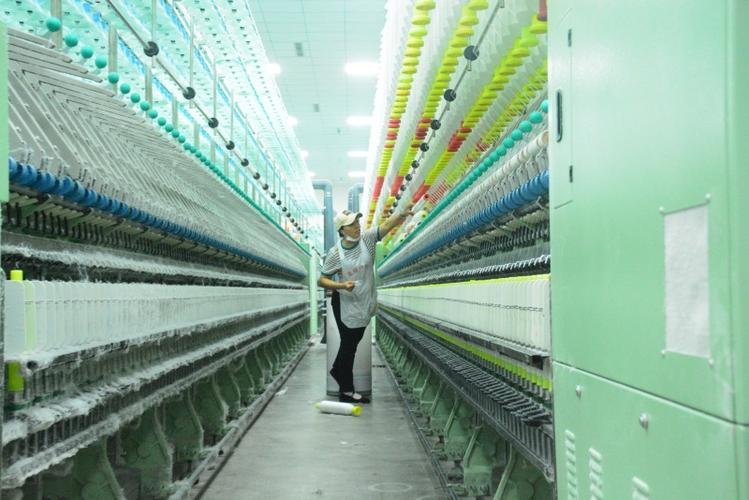
Raw flax fibers and finished linen fabric present markedly different tactile and performance characteristics. Raw flax fibers are coarse, stiff, and irregular—measuring 28–36 mm in length with diameters of 12–20 µm—whereas finished linen fabric is smooth yet textured, drapes softly, and shows consistent thickness (0.3–0.5 mm) and tensile strength (3,000–4,000 N/m). The transformation through spinning, weaving, and finishing not only refines hand and drape but also enhances moisture management and durability, turning a botanical extract into a premium textile.
Contrasting Key Properties
Fiber vs. Fabric Diameter & Uniformity
- Raw Flax Fiber Diameter: 12–20 µm; variability ±20%. Surface: Natural waxes and impurities remain.
- Finished Linen Fabric Thickness: 0.3–0.5 mm; uniform within ±10%. Surface: Scoured and finished for consistent hand, minimal rough spots.
Tensile Strength & Elongation
- Raw Flax Fiber Tensile: 25–32 cN/tex; elongation at break \~2.5%.
- Linen Fabric Tensile: 3,000–4,000 N/m in warp and weft (ASTM D5034); elongation at break 10–15%. Implication: Fabric construction multiplies fiber strength and flexibility.
Moisture Regain & Wicking
- Raw Flax Fiber Regain: 12–14%; uneven absorption along fiber length.
- Linen Fabric Regain: 12–15%; capillary weave channels enable rapid wicking (>200 g/m²·24 h). Drying: Fabrics dry in <30 minutes under standard conditions.
Hand Feel & Drape Coefficient
- Raw Flax Fiber Hand: Stiff, scratchy without processing.
- Linen Fabric Hand: Softens \~10–15% after enzyme polishing. Drape: Drape coefficient 0.40–0.60 (Kawabata KES-F), varies by weave and weight.
Raw Flax vs. Finished Linen Properties
| Property | Raw Flax Fiber | Finished Linen Fabric | Performance Transformation |
|---|---|---|---|
| Diameter | 12–20 µm (±20 %) | 0.3–0.5 mm (±10 %) | Uniform thickness via weaving |
| Tensile Strength | 25–32 cN/tex | 3,000–4,000 N/m | Yarn and weave multiply strength |
| Elongation at Break | \~2.5 % | 10–15 % | Increased flexibility in fabric |
| Moisture Regain (%) | 12–14 % | 12–15 % | Capillary action in fabric |
| Wicking Rate | N/A | ≥200 g/m²·24 h | Fabric channels moisture |
| Hand Feel | Stiff, coarse | Soft, textured | Finishing treatments |
| Drape Coefficient | N/A | 0.40–0.60 | Weave structure |
Critical Perspectives
- Strength vs. Softness The weaving and finishing stages trade raw fiber stiffness for fabric pliability, but over-processing can diminish linen’s signature texture.
- Moisture Behavior While both fiber and fabric absorb similar moisture percentages, the fabric’s structure dictates superior wicking and comfort next to skin.
- Quality Control Checkpoints Inspect both fiber bales for uniform staple length and loose impurities, and final yardage for consistent thickness and tensile readings to ensure end-use performance.
- Processing Impact Each step—scouring, bleaching, enzyme treatment—alters raw fiber properties; partners should document treatment recipes to maintain batch consistency.
How Do Performance Characteristics (Strength, Moisture, Hand) Differ Between Flax and Linen?
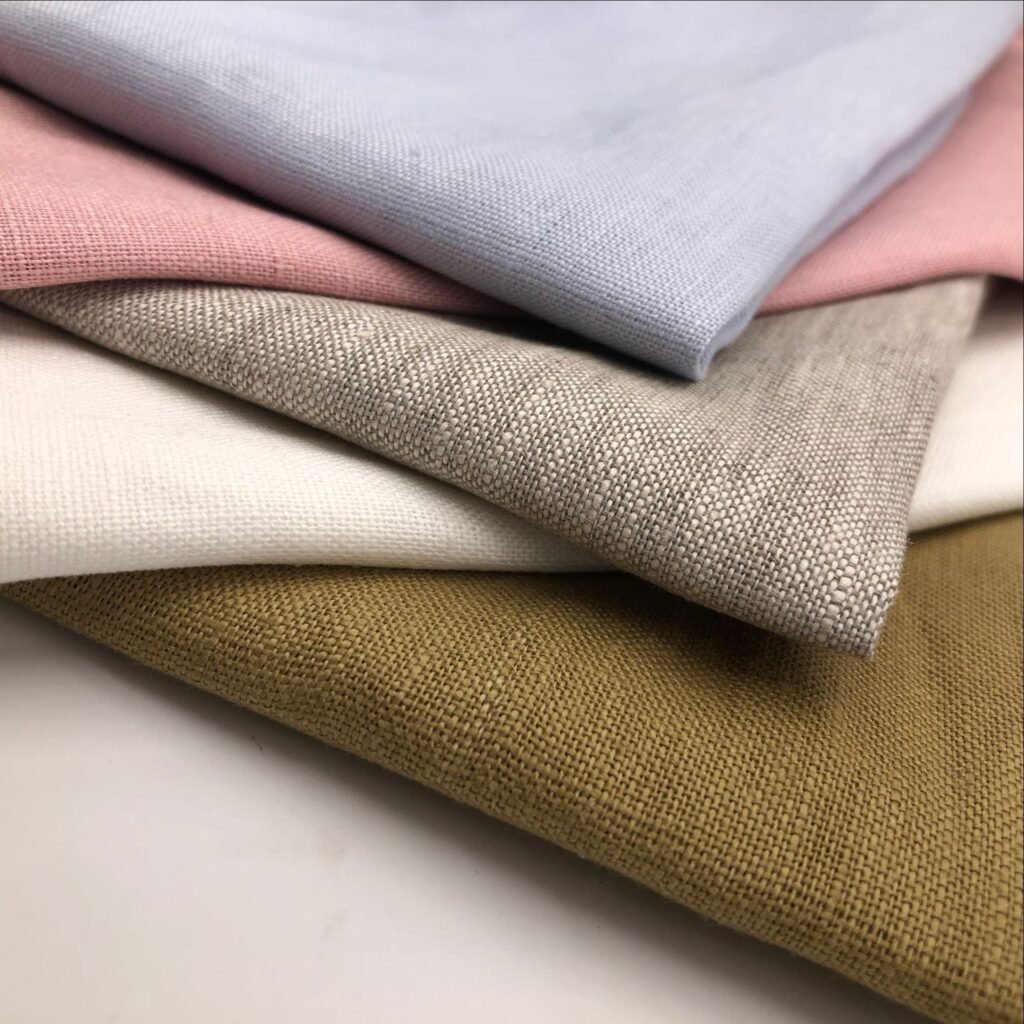
Though flax fibers exhibit high inherent tensile strength (\~25–32 cN/tex), only when spun, woven, and finished into linen do they deliver the balanced performance modern applications require: fabrics with tensile strengths of 3,000–4,000 N/m, moisture–wicking rates above 200 g/m²·24 h, and a soft yet substantial hand that improves by 10–15 % after washing.
Linen’s engineered structure amplifies flax’s raw properties—multiplying fiber strength across yarns, transforming stiff bast into supple cloth, and channeling moisture rapidly away from the skin—making linen vastly more versatile and user-friendly than raw flax.
From Fiber to Fabric—Performance in Detail
Tensile & Tear Strength
- Raw Flax Fiber: 25–32 cN/tex (single fiber)
- Linen Fabric: 3,000–4,000 N/m (ASTM D5034 grab test) Weave Influence: Plain weave offers uniform strength; twill weaves can boost tear resistance by 15–25 %. Finishing Impact: Enzyme polishing and mercerization contribute up to 10 % tensile improvement.
Moisture Regain & Wicking
- Fiber Regain: 12–14 % (ASTM D2654)
- Fabric Regain: 12–15 % with capillary action
- Wicking Rate: Untreated Linen: \~200 g/m²·24 h Enzyme–Softened: \~240 g/m²·24 h (+20 %)
- Dry Times: Fabric dries in under 30 minutes, vs. 90 minutes for comparable cotton.
Hand Feel & Drape
- Raw Flax: Coarse and stiff; unsuitable for garments without processing.
- Linen Fabric: Initial Hand: Medium‐firmer hand (Kawabata hand value \~0.45) Post-Wash Softness: Improves to \~0.55 after three gentle home washes. Drape Coefficient: 0.40–0.60, adjustable via yarn count and weave type.
Durability & Pilling
- Flax Fiber: Low tendency to pill but fragile if over-processed.
- Linen Fabric: Abrasion Resistance: 20,000–60,000 Martindale rubs, depending on weave. Pilling: Minimal—grades 4–5 after 10,000 rub cycles (ISO 12945).
Performance Comparison—Flax Fiber vs. Linen Fabric
| Characteristic | Flax Fiber | Linen Fabric | Improvement Factor |
|---|---|---|---|
| Tensile Strength | 25–32 cN/tex | 3,000–4,000 N/m | ×100–120 |
| Moisture Regain (%) | 12–14 | 12–15 | N/A |
| Wicking Rate | N/A | 200 g/m²·24 h (untreated) | N/A |
| Drying Time (min) | N/A | <30 | N/A |
| Hand (Kawabata) | N/A | 0.45→0.55 (post-wash) | +22 % |
| Abrasion Resistance | N/A | 20,000–60,000 rubs | N/A |
Critical Perspectives
- Fiber vs. Fabric Context Raw flax metrics only predict potential—fabric construction and finishing determine real-world performance.
- Finishing Trade-Offs Enzyme washes boost comfort and wicking but may reduce abrasion resistance by 5–10 %; choose treatments that align with use cases.
- Weave Selection Heavier weaves excel in durability but limit drape; lightweight plain weaves optimize comfort in apparel.
- Lifecycle Thinking Linen’s superior strength and rapid drying yield lower replacement rates and laundering costs, offsetting its higher initial price point.
Which Weave and Finish Options Highlight Linen’s Unique Traits?
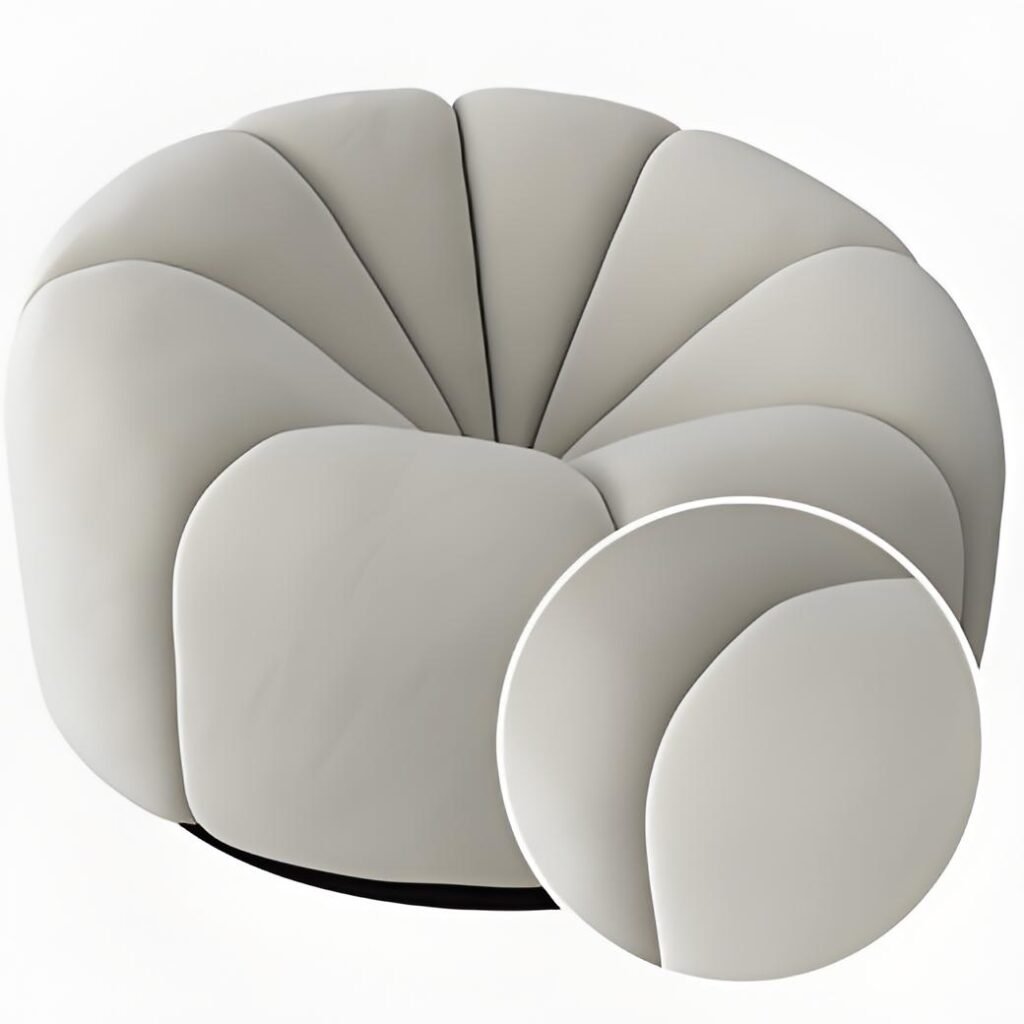
Selecting the right weave and finish amplifies linen’s signature look and performance. Plain weaves showcase linen’s natural slubs and matte luster, twill weaves add drape and abrasion resistance, while basket or dobby constructions offer textured depth. Finishes like enzyme washes soften hand by up to 30%, mercerization increases sheen by 20%, and optional DWR treatments impart water repellency (hydrostatic head ≥1,000 mm) without sacrificing breathability.
Weave Structures and Finishing Treatments
Weave Structures
- Plain Weave Attributes: 1×1 interlacing; balanced strength; high tear resistance. Use Cases: Crisp shirts, lightweight drapes, pillow covers.
- Twill Weave Attributes: 2×2 or 3×1 diagonal ribs; increased drape; 15–25% higher abrasion resistance. Use Cases: Trousers, heavier drapes, upholstery.
- Basket Weave Attributes: 2×2 grouped yarns; open, textured; enhanced airflow. Use Cases: Casual tops, quilts, decorative throws.
- Dobby & Jacquard Attributes: Complex small-scale patterns; premium aesthetic. Use Cases: Luxury bedding, designer apparel accents.
Finishing Treatments
- Enzyme (Biopolish) Wash Effect: +30% hand softness; –50% pilling.
- Mercerization Effect: +20% luster; +10% tensile strength; deeper dye penetration.
- DWR Coating Effect: ≥1,000 mm water resistance; <10% breathability loss.
- Softener Effect: +15% drape coefficient; silk-like finish.
Weave & Finish Combinations for Linen
| Weave Type | Hand & Drape | Abrasion (Martindale) | Best Finish Combo | Typical Use Cases |
|---|---|---|---|---|
| Plain | Crisp, moderate drape | 20,000–30,000 | Enzyme wash + softener | Shirts, sheers, light upholstery |
| Twill | Soft, fluid drape | 30,000–40,000 | Mercerize + DWR | Pants, heavy drapes, upholstery |
| Basket | Textured, airy | 15,000–25,000 | Enzyme wash | Casual tops, throws |
| Dobby/Jacquard | Intricate texture | 20,000–35,000 | Mercerize + softener | Luxury bedding, fashion details |
Critical Perspectives
- Balance of Aesthetic and Function Choose twill weaves for durability where abrasion matters, and plain weaves with enzyme finishes for high-end shirting that demands crispness and softness.
- Finish Sequencing Apply DWR post-mercerization to ensure water repellency without hindering luster gains; sequence finishes for optimal effect.
- Production Efficiency Complex dobby or jacquard weaves increase loom setup time by 20–30%—reserve for flagship SKUs.
- User Experience Enzyme and softener finishes improve comfort immediately but may require gentle care labels; ensure end-users understand laundering needs.
What Sustainability and Environmental Considerations Separate Flax Cultivation from Linen Production?
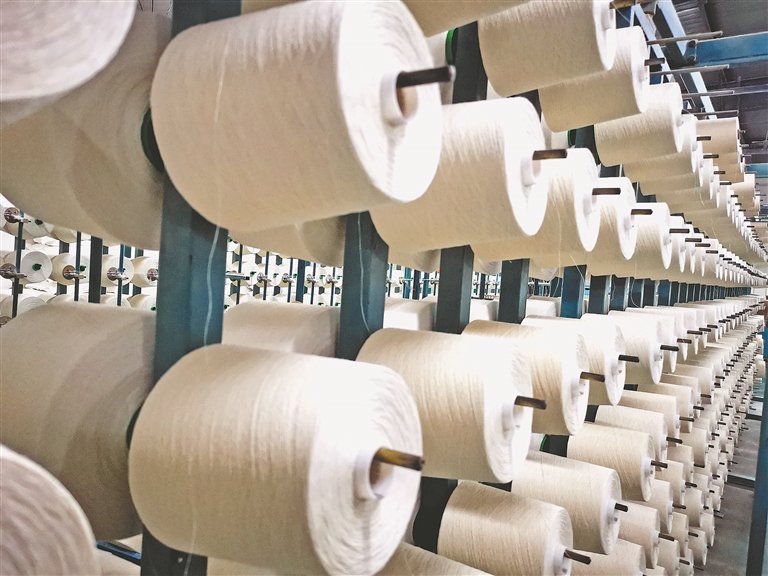
Sustainability in the linen supply chain spans from eco-friendly flax farming to low-impact finishing. Flax cultivation—especially dew retting—uses minimal chemicals, often requires 30% less water than cotton, and enriches soil in crop rotations. However, linen production stages like water retting, scouring, and bleaching can generate effluents and energy use. Brands must assess each phase: choosing certified organic flax, mills with closed-loop water systems, Oeko-Tex® and GOTS finishes, and carbon-neutral energy to minimize environmental footprints.
Lifecycle Impacts and Mitigation Strategies
Flax Cultivation Footprint
- Water Use: 1,000–2,000 L/kg fiber vs. cotton’s 10,000–20,000 L/kg.
- Pesticide Needs: Flax often grown with <1 kg/ha pesticides; cotton averages 5–10 kg/ha.
- Soil Health: Deep roots improve soil structure and carbon sequestration.
Retting and Effluent Management
- Traditional Water Retting: Uses 10–15 m³ water per tonne stalks; can release organic load into waterways.
- Closed-Loop Retting: Recirculates and treats water—reducing fresh water use by 70–80%.
- Dew Retting: Zero water input but risks inconsistent fiber quality.
Scouring, Bleaching & Dyeing
- Chemical Load: Conventional alkali/bleach dips use 10–20 g/L NaOH and H₂O₂; off-gas and effluent demand treatment.
- Eco-Alteratives: Enzyme-based scouring and low-impact reactive dyes cut COD (chemical oxygen demand) by 40–60%.
Certifications & Energy
- Oeko-Tex® Standard 100: Ensures no harmful residues in fabric.
- GOTS: Mandates organic inputs and wastewater treatment, plus fair labor.
- Renewable Energy Use: Mills powered ≥50% by biomass or solar reduce carbon footprint by \~30%.
Environmental Metrics—Flax vs. Linen Processes
| Process Stage | Metric | Conventional Practice | Sustainable Alternative |
|---|---|---|---|
| Cultivation | Water Use (L/kg fiber) | 1,000–2,000 | Same |
| Pesticide Input | kg/ha | <1 | 0 (organic flax) |
| Retting | Fresh Water Use | 10–15 m³/t stalks | 2–3 m³ via closed-loop |
| Scouring/Bleaching | NaOH/H₂O₂ (g/L) | 10–20 | Enzyme scouring, low-impact dyes |
| Energy Source | % Renewables | 10–20 | ≥50 |
Critical Perspectives
- Dew vs. Water Retting Dew retting eliminates water use but may compromise fiber strength and uniformity—balance sustainability with quality requirements.
- Certification Premiums GOTS and Oeko-Tex® add 5–15% cost but unlock eco-conscious markets and reduce regulatory risk.
- Closed-Loop Investments Mills with effluent treatment command higher prices but guarantee compliance and social license—ideal for brands prioritizing true sustainability.
- Carbon Accounting Track cradle-to-gate emissions; source from mills with renewable energy and carbon offset programs to meet corporate ESG goals.
How Should Fabric Buyers Choose Between Flax Fiber and Linen Fabric for Their Specific Applications?
Choosing flax fiber versus finished linen fabric depends on your position in the supply chain and application requirements. If you’re a spinner or specialty yarn producer, sourcing raw flax lets you control yarn counts and blends. If you’re a brand or converter, selecting pre-woven linen fabric ensures consistency in hand, drape, and performance, with minimal processing needed. Understanding end-use—whether you need yarn for weaving technical blends or a finished fabric for apparel or décor—guides whether to source raw flax or invest in linen cloth.
Decision Criteria and Recommendations
Supply Chain Role
- Yarn Producers & Mills: Source Flax: Specify staple length, retting method, and top/tow ratios to tailor spinning operations. Control: Custom yarn counts (Ne), twist levels, and blending with synthetics or cotton.
- Brands & Converters: Source Linen Fabric: Select weave, weight, and finishes to expedite cut-and-sew. Focus: Align fabric specs with design and performance needs—e.g., enzyme-softened, DWR-treated for ready-to-wear.
Application Requirements
- Apparel: Needs: Soft hand, precise drape, vivid print capability. Recommendation: Fine yarn (Ne 30–40), tight plain or twill weave, enzyme or mercerized finish.
- Home Textiles: Needs: Texture, durability, easy care. Recommendation: Coarser yarn (Ne 20–30), basket or dobby weaves, softener finish and optional stain-release treatment.
- Technical Textiles: Needs: High strength, dimensional stability, possible fire or water resistance. Recommendation: Blend flax with nylon or aramid; twill weave; DWR or FR coatings.
Sustainability Priorities
- Organic Certification: Choose GOTS-certified flax for full organic yarns, and GOTS-certified linen for finished fabrics.
- Water Use: Opt for mills using closed-loop retting and enzyme-based finishing.
- Carbon Footprint: Balance local flax sourcing (e.g., EU) with end-market proximity to reduce transport emissions.
Cost Considerations
- Raw Flax: Lower per-kilogram cost but adds processing overhead for spinning/weaving.
- Finished Linen: Higher per-yard price but includes value-added processes—ideal for brands without in-house mills.
Flax vs. Linen Sourcing Decision Matrix
| Criterion | Raw Flax Fiber | Finished Linen Fabric |
|---|---|---|
| Supply Chain Role | Yarn mills, spinners | Brands, converters |
| Control over Specs | Staple length, tow/top ratio, blends | Weave, weight, finish |
| Application Focus | Custom yarns for weaving or blending | Ready-to-use apparel or décor |
| Sustainability | Organic flax, minimal inputs | GOTS/Oeko-Tex® certified fabrics |
| Cost Structure | \$1.50–\$3.00/kg + processing | \$5–\$15/yard (weave & finish included) |
| Lead Time | 2–4 weeks for flax + processing time | 4–8 weeks for finished fabric |
Ready to streamline your flax or linen sourcing?
Understanding the distinction between flax fiber and linen fabric empowers buyers to optimize their sourcing strategy—whether you need bespoke yarns for technical textiles or premium fabrics ready for production. Szoneier Fabrics offers both raw fiber processing services and finished linen fabrics with customizable yarn counts, weaves, and finishes, coupled with low MOQs, rapid sampling, and rigorous quality controls.
Contact Szoneier Fabrics today for free consultations, fiber and fabric samples, and tailored quotes that align with your brand’s performance, aesthetic, and sustainability goals.

